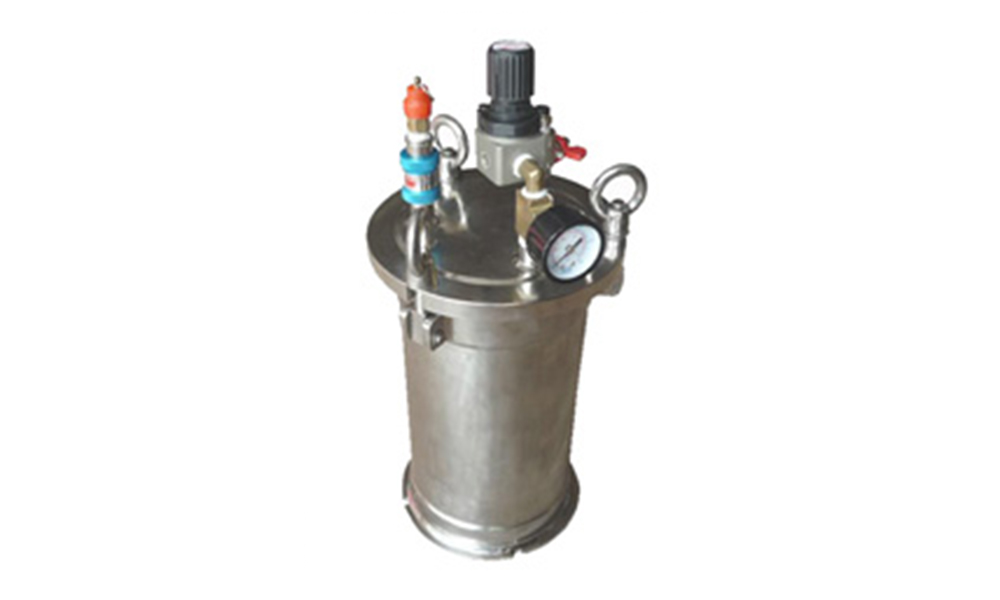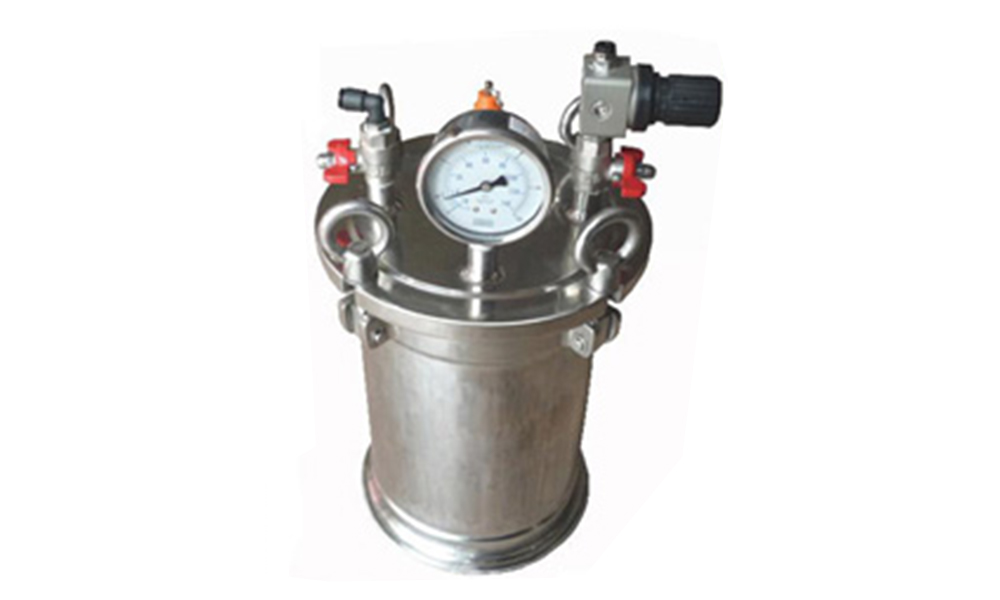Pressure tank is a stainless steel container that allows low, medium and high viscosity chemicals to be pressurized and transferred to the barrel or valve in a safe and controlled manner. These tanks, which appeal to different needs with their 2 liter, 3 liter, 5 liter and 10 liter capacity models, stand out with their user-friendly design and safety features. In this article, we will discuss in detail what a pressure tank is, what its features are and what should be considered for safe use.
What is a Pressure Tank?


Our Pressure Tank Type
- 2 Liter: Ideal for compact and small-scale applications.
- 3 Liter: Suitable for medium-volume projects.
- 5 Liter: Designed for larger volume chemical transfers.
- 10 Liter: Used in high-capacity applications.
You can visit our website to examine our pressure tank types in detail.
Features of Pressure Tank
-
User-Friendly Design: You can easily adjust the tank pressure via valves.
-
Analog Manometer: Allows you to instantly monitor the pressure inside the tank.
-
Safety Valves: Provides automatic discharge against sudden pressure increases.
-
Level Indicator: Allows you to control the chemical level in some models.
-
Durable Material: It has a long service life thanks to its stainless steel structure.
-
Flexible Use: Compatible with low, medium and high viscosity chemicals.
Basınçlı Tank Nasıl Kullanılmalı?
-
Take Work Safety Precautions
-
Before starting work, put on your protective equipment such as safety glasses and gloves.
-
If the chemicals inside (such as glue) splash into sensitive areas such as eyes, mouth or nose, it can cause serious health problems.
-
-
Learn Valve Directions
- Learn the open and closed positions of each valve. Using the wrong valve can cause chemical leaks or accidents.
- Do not remove the pneumatic hose without making sure the material outlet valve is closed. Otherwise, the chemical may squirt out of the tank under high pressure and contaminate the environment.
-
Fill the Tank and Close the Cap
- Fill the tank with the chemical you will use and turn the material outlet valve to the closed position.
- Before closing the tank lid, make sure that the O-ring (gasket) is properly placed for sealing. Incorrectly closed lids cause air or chemical leakage.
-
Prepare the System
- Check the hose and union connections of the cylinder, valve and dosing system.
- Provide energy and compressed air to the system.
-
Adjust the pressure and start using
- Open the material outlet valve and start transferring chemicals.
- Monitor the pressure in the tank via the analog manometer and keep it at the desired value.
- In case of overpressure, the pressure relief valve is automatically activated.
-
Release the Pressure Before Opening the Tank
- Before opening the tank cover, close the air inlet valve and completely release the air inside the tank using the silenced air release valve.
- After confirming that the pressure gauge has dropped to zero, open the cover.
Things to Consider When Using Pressure Tanks
- Valve Control: Do not pressurize the tank without knowing the valve directions.
- Leakage: Make sure the cover gaskets are placed correctly.
- Pressure Monitoring: Keep the pressure at the appropriate level by checking the manometer regularly.
- Safety Equipment: Do not neglect the use of safety glasses and gloves.
- Level Indicator: Use the level indicator to monitor the filling time of the tank.
Why Should You Use a Pressure Tank?
Pressure tanks make chemical transfer processes safe, fast and efficient. Thanks to its stainless steel structure, it offers long-lasting use and is compatible with chemicals of different viscosities. Safety valves and user-friendly design both increase work safety and provide operational convenience.
Pressure tanks are indispensable equipment in industrial chemical transfer processes. With correct use and safety measures, these tanks both increase your work efficiency and provide a safe working environment. You can examine our pressure tank models offered in different capacities from 2 liters to 10 liters or contact our experts to get detailed information.
